Welcome to the Astrobites coverage of the 2022 April APS Meeting! Some of our authors this week were in-person while others attended virtually! We reported on highlights from each day here, from APS Press Conferences to graduate student research talks. If you’d like to see more updates, we encourage you to search the #aprilAPS hashtag on Twitter and look at our coverage of past days of the meeting on Astrobites.
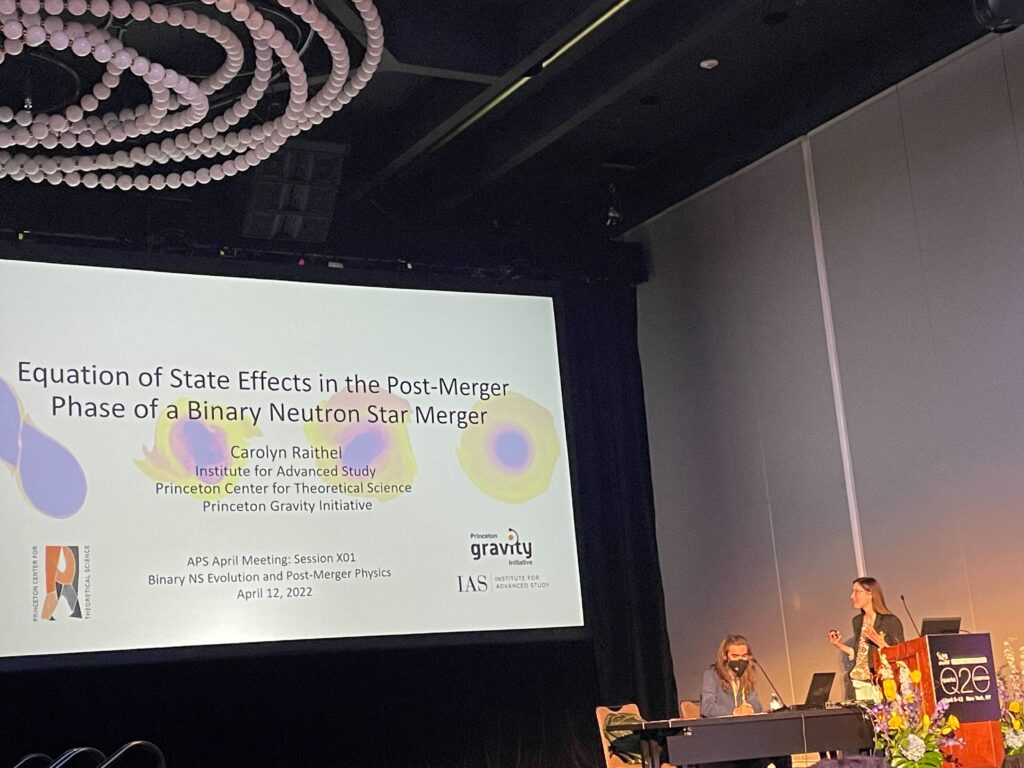
Binary Neutron Star Evolution and Post-Merger Physics (by Sumeet Kulkarni)
GW170817, LIGO and Virgo’s first detection of gravitational waves from a binary neutron star (BNS) merger, caught everyone by surprise by being a gold-plated event. The multi-messenger observation of this merger via gravitational waves as well as the electromagnetic counterpart of the successive kilonova explosion shed light on BNS mergers as cradles for the formation of heavy elements in the periodic table such as gold itself, through a mechanism known as r-process nucleosynthesis.
The focus of session X01 at APS April 2022 was physics that follows the merger of two neutron stars, both in terms of the gravitational-wave signal and kilonova afterglows. The session was headlined by former astrobiter Sanjana Curtis (University of Chicago), looking at the synthesis of heavy elements in neutron star mergers through the r-process. The extreme density and pressure environment immediately following a BNS merger facilitates the r-process, which involves rapid, short-term capture of neutrons by nuclides to form successively heavier elements. This process is believed to account for the majority of elements produced in our universe heavier than Iron, and observations as well as careful modeling of kilonovae is crucial to understand details surrounding it. Sanjana emphasized that a key element in determining the success of this process is the electron fraction. If this fraction is less than 0.25, more heavy lanthanide elements are forged, and the modeled kilonova lightcurves tend to peak at red wavelengths. On the other hand, electron fractions greater than 0.25 lead to less production of lanthanides and blue kilonovae.
A big takeaway from this talk was that there is a zoo of kilonovae out there, and numerical simulations exploring an array of parameters such as the equation of state, stability of the remnant and neutrino mechanisms can help us pin down if an observed kilonova is of one kind or the otter.
The following talk of the session, by Daniel Siegel from the Perimeter Institute, also covered numerical simulations of BNS mergers and the role of various underlying mechanisms on r-process nucleosynthesis. His talk explored the question: where in the region surrounding the merger are these heavy elements forged? Daniel expanded on two particularly important features of post-merger physics: (i) Areas where the ejected matter flows at extremely fast speeds, and (ii) The role of magnetic fields and neutrinos in a jet along the axis of the merger.
A fraction of the matter thrown out at the end of a neutron star merger can have speeds as high as 0.6-0.7 times the speed of light! This fast outflow and shock-heated ejecta may provide a source of neutrons for the r-process. This fast ejecta can actually be observed through an X-ray and radio afterglow.. a re-brightening after the initial kilonova, hints of which have already been seen with GW170817! The second interesting feature Daniel discussed was a “Magnetic Tower with Neutrinos”: where neutrino absorption along the merger’s axis can sustain and stabilize a jet structure, which can create the high speed matter mentioned above.
The last invited talk of the session was given by Carolyn Raithel from the Institute for Advanced Study (IAS) at Princeton. Carolyn reminded us that neutron stars push matter to its very extremes. At the core of a neutron star, we don’t know in what form it exists: Is it plain nuclear matter? Or an exotic matter state such as Pion condensates, Hyperons, or Free quark condensates? One of the ways to answer this question is to probe the equation of state, which governs how compact or squishy a neutron star is. Notwithstanding the unknown states of matter, even a transition from symmetric matter having equal numbers of protons and electrons to purely nuclear matter involving neutrons involves an energy cost, called the nuclear symmetry energy. This is one of the quantities that we can probe with the post-merger phase of a BNS coalescence. Simulations suggest that patterns of dynamical ejecta carry a weak imprint of the slope of the symmetry energy: Larger the slope, more enhanced is the ejecta. A smaller symmetry energy also suggests stronger shock heating of the ejecta outflow, but has no effect on the electron fraction.
While the nuclear symmetry energy does not leave any distinguishing imprints on the BNS gravitational wave signal, at least at the current high-frequency sensitivities of detectors, the post-merger gravitational wave signals can probe simultaneously the characteristic radii of neutron stars and their mass-radius relationship. Both of these are crucial in understanding the neutron star equation of state.
We may have struck gold with GW170817, but it is certainly not the last multi-messenger observation of a BNS merger. The next ones will prove to be even more informative thanks to several groups around the world busy refining increasingly sophisticated numerical simulations of BNS mergers, a few examples of which we heard about in this session.
The recording of this session (X01) will be available to registered April APS attendees until July 12, 2022 at the link here and our live-tweets are here.
Looking to the Future for Particle Physics and Astrophysics (by Briley Lewis)
On the fourth and final day of APS April 2022, we’re taking some time to look to the future. What comes next for particle physics and astrophysics?
First, focusing on the particle physics half of this session, Mark Palmer (Brookhaven National Lab) described the path forward for a new particle accelerator in the United States. Progress has slowed down in recent years, partly because the technology needed to push the boundaries of science has become increasingly complex. Palmer emphasized the need to probe higher energies, particularly greater than 1 TeV, to really push forward particle physics and make new discoveries. There are a number of new technologies in development that can help us get there: improvements to linear colliders, cool copper colliders, and even plasma wakefield accelerators. One exciting possibility for the future is a 10 TeV Muon Collider, which would offer an order of magnitude improvement in the precision of measurements of the Higgs Boson. The catch? “Unfortunately no future collider can be considered low cost,” says Palmer. “Continued research and development is required if we want to get to that next transformative technology.”
Joel Butler (Fermilab) continued the conversation on particle physics by giving an overview of Snowmass, the Particle Physics Community Planning Exercise. Similar to the Astro2020 Decadal Survey, Snowmass brings together particle physicists to collaboratively create a vision for the future of the field. Their goal is to “identify the most important questions in high-energy physics and the tools and infrastructure required to address them.” Their recommendations then are passed on to P5, the Particle Physics Project Prioritization Panel, which creates a 10 year strategic plan. Started in 1982, the most recent Snowmass was held in 2013. Previous high priorities include the Higgs boson, the mass of neutrinos, dark matter, dark energy, and finding new particles. An exciting outcome of Snowmass2013 was Muon g-2, which recently added to a mounting pile of evidence for physics beyond the Standard Model with a new measurement of the muon’s magnetic moment. Now, a new iteration of Snowmass is finally underway, although slightly delayed due to the pandemic. They have ten new frontiers to focus on: accelerators, cosmic, energy, computing, instrumentation, infrastructure, neutrinos, rare decays and precision measurements, theory, and community engagement. Snowmass also encourages early career scientists to get involved in the program!
Last, but certainly not least, Massimo Stiavelli (STScI) talked about the exciting, finally launched JWST, which is sure to be revolutionary for astronomy. If you want to read up on the telescope, we’ve got bites about the mission and its launch last December (and also the controversy around its name). Today, Stiavelli shared a recap of the telescope’s first light and progress towards alignment. Focusing an 18-segment telescope is a challenge, and the team has been hard at work on it! Although commissioning has about 2.5 months left, they’re looking forward to Cycle 1, which has more than 10,000 hours of scheduled observing time including guaranteed time observations, director’s discretionary early release science, and general observer time. There are almost 400 individual programs, and more than 2,500 investigators worldwide, covering nearly every area of astrophysics, including planetary astronomy! Lots to look forward to in the next year, and beyond!
The recording of this session (X03) will be available to registered April APS attendees until July 12, 2022 at the link here.
-
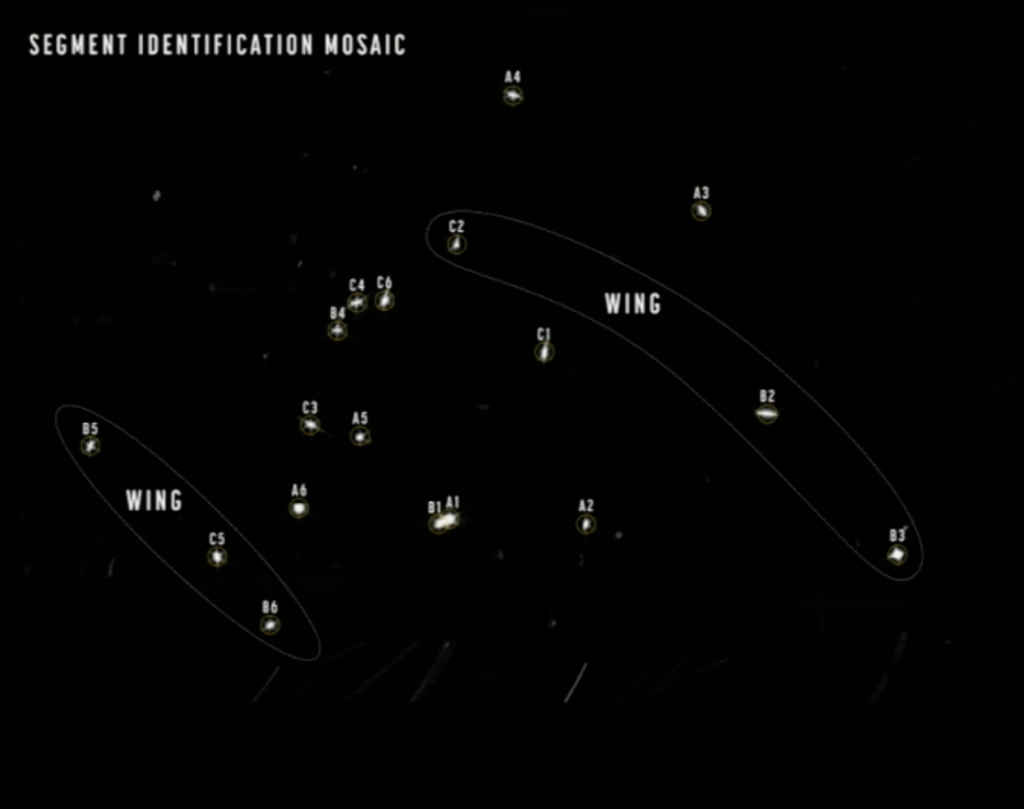
A mosaic of images from the various segments of JWST’s mirror, identifying which image comes from which segment of the mirror to help in alignment. From M. Stiavelli’s talk / STScI. -

The first image released from JWST showing what a star looks like with all the mirrors properly aligned, as part of calibration. Many galaxies are visible in the background.
-
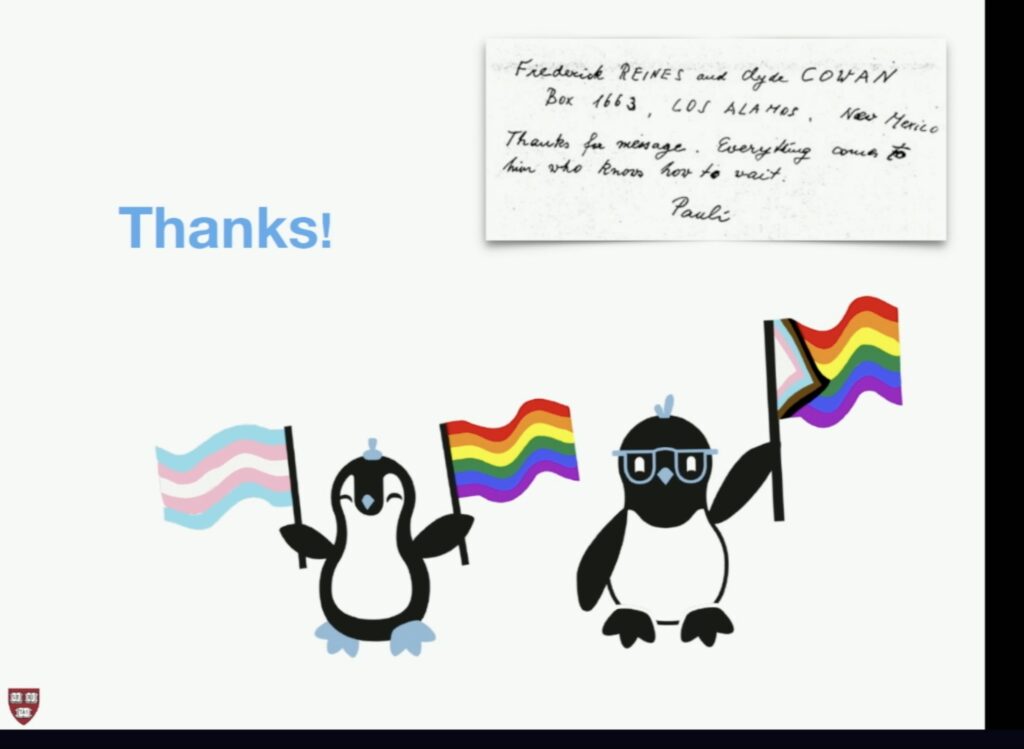
Pride penguins on the final slide of C. Arguelles’s talk. -

A postcard from Francis Halzen to IceCube, as seen in C. Arguelles’ talk. -

Arguelles’ title slide, highlighting the fantastic penguins and postcards theme. -

A postcard Katori wrote to IceCube with the neutrino flavor change idea. -
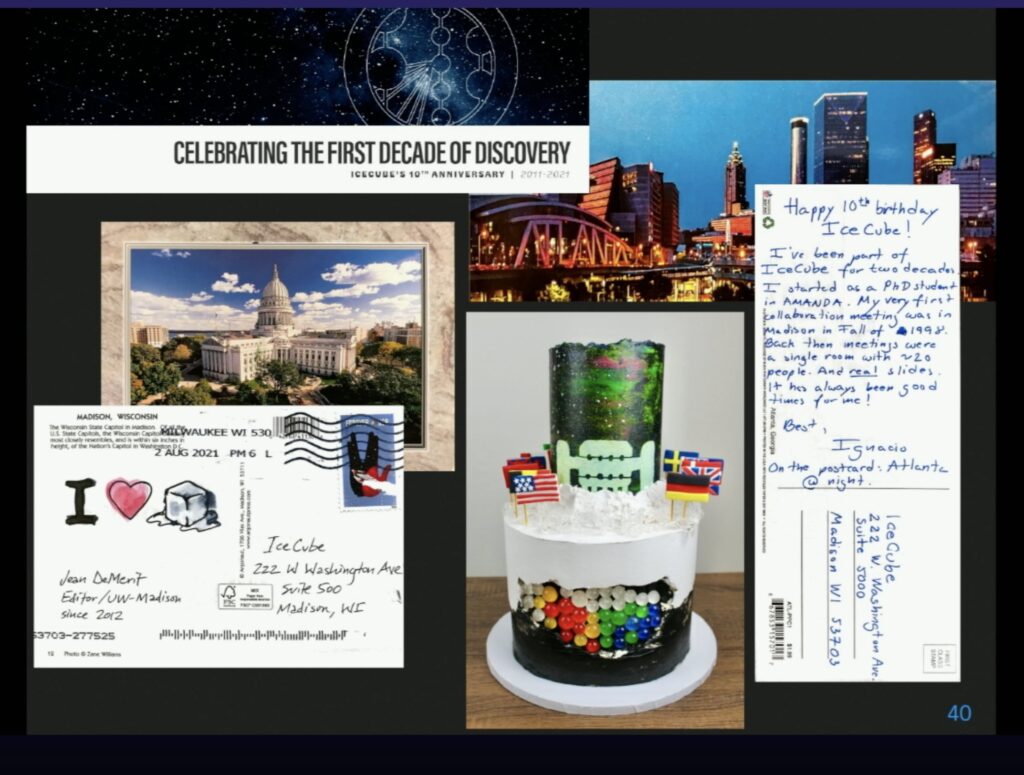
A collection of postcards to IceCube shown in Ali Keirandish’s talk.
Postcards from the Very Edge, With Love from IceCube (by Briley Lewis)
This afternoon’s session on science with IceCube, the gigantic neutrino detector at the South Pole, was arguably the best themed conference session we’ve ever seen, filled with postcards and penguins. Neutrinos are incredibly hard to detect, since they hardly interact with anything — that’s why we need a cubic kilometer of detectors to see them. But, at the same time, this is also why they’re such a great target for astrophysical observations, since they aren’t absorbed by pesky dust or gas in space, tracing straight lines back to their sources. Neutrinos are produced in some of the highest energy places in the Universe, like supernovae, AGN, and Gamma Ray Bursts. IceCube spots these elusive particles when they interact with a nucleus, emitting a charged particle that the detectors can pick up. Different types of neutrinos have different distinct signatures.
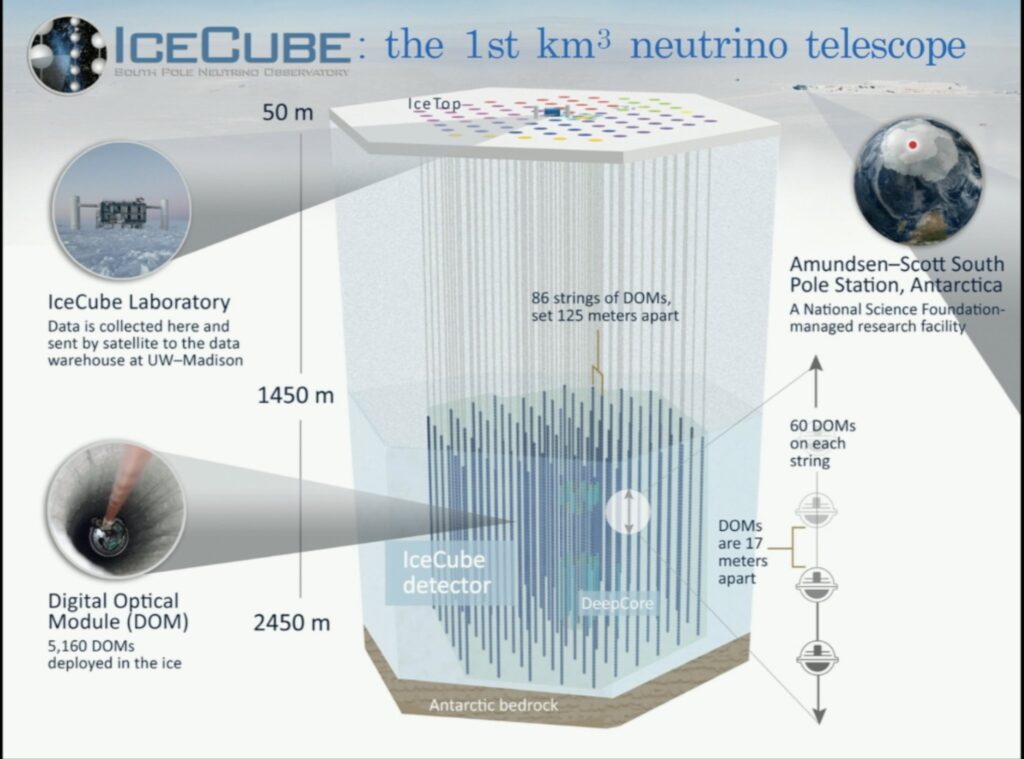
Ali Keirandish (Penn State) gave some updates on neutrinos from astrophysical sources. The challenge of detecting neutrinos is that there’s a lot of background noise, making it hard to see individual sources. After a decade of observations, IceCube is finally starting to see anisotropies, or “hot spots,” where there are more neutrinos clustered in one area. One of these hotspots corresponds to NGC 1068, a Seyfert 2 galaxy that hosts a very well-studied AGN. Another corresponds to TXS 0506+056, a blazar that showed a neutrino burst in 2014. It looks like AGN are a main source of these high-energy cosmic neutrinos, and there’s hopefully lots more exciting science to come!

Teppei Katori (King’s College London) talked about using IceCube’s neutrino detections for something beyond astrophysics: finding hints of new physics beyond the Standard Model, namely Quantum Gravity (QG). QG is the “holy grail” of physics, a unification of particle physics and general relativity. Turns out, QG could cause changes in the “flavor” of neutrinos (e.g. changing an electron neutrino to a tau neutrino). To find these neutrinos, you can go to long distances or high energies. LIGO is way too short for interferometry at this distance — we need >100 Mpc to see flavor changes! The Large Hadron Collider doesn’t get to high enough energies either — we need >60 TeV, an order of magnitude above its current capabilities. Neutrinos in space meet these requirements though. They travel huge distances to get to us, are often quite high energy, and we can observe the ratio of different neutrino flavors with IceCube. Katori hasn’t found any hints of flavor changes with this method yet, but is optimistic this technique will be a powerful test of fundamental physics in the near future, especially as IceCube gets upgraded.

Lastly, Carlos Arguelles (Harvard) showed how IceCube can help us search for nu friends. (Heh, get it, new friends? Since the neutrino is abbreviated as nu?) Other experimental results have led physicists to propose a new, 4th kind of neutrino: the sterile neutrino, which strangely only interacts via gravity and not any of the other fundamental forces. IceCube might be able to help us find evidence of this new friend in physics! By looking at over 300,000 neutrino detections with IceCube, Arguelles and collaborators found hints that the hypothesis of sterile neutrinos might be correct, but things are pretty low significance and definitely need future work. Similar to what Katori said, Arguelles emphasized that the future looks bright for IceCube and all the science we can do with it—maybe we’ll find a new friend someday soon!
The recording of this session (S03) will be available to registered April APS attendees until July 12, 2022 at the link here and our live-tweeting of the session here
CDF Measurement of the W Boson Mass (by Briley Lewis)
Today, a session was added at the last minute to accommodate a press conference on the breaking (and somewhat controversial) news about a new measurement of the W Boson mass. The W boson, along with its partner the Z boson, are the particles that create the weak force within nuclei — important for stellar nuclear fusion, and many more phenomena in our universe. A few days ago, the CDF collaboration at Fermilab announced that they had measured the W Boson’s mass more precisely than ever before, and their result clashed with the predictions of the widely-accepted Standard Model, the theoretical framework governing particle physics. The measurement was incredibly precise — a seven sigma deviation from Standard Model predictions. This discovery has garnered widespread news coverage, some debate, and even quite a few memes, especially on Twitter.
In the press conference, the discovery team (represented by 5 scientists: Giorgio Chiarelli, Christopher Hays, Bo Jayatilaka, Ashutosh Kotwal, and Dave Toback) recapped the results and took questions from the audience. Kotwal stated that this new CDF result is “twice as precise as previous measurements” and “suggests the possibility of improvements to the Standard Model calculation or of extensions to the Standard Model.” They have been working on this result since October 2020, but managed to keep it under wraps until they were confident. “COVID helps you keep the poker face, because you don’t see anyone!” one team member remarked. The team explained that an incredibly high level of scrutiny and rigor was applied to this result, and they are confident and looking forward to “continued investigation” of the W Boson.
Featured Image Credit: APS April 2022
Edited By: Sumeet Kulkarni, Briley Lewis, Huei Sears


